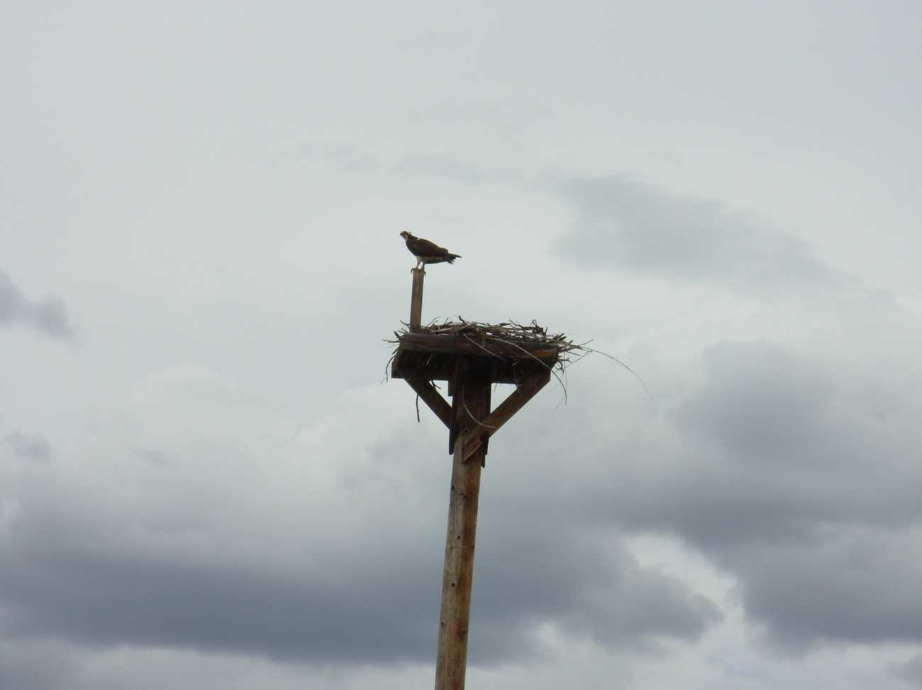Avian nesting platforms are conservation tools used worldwide by wildlife managers and at-home birders alike. These structures can be large or small, depending on the size of the bird for which they are designed. Large nesting platforms, built for raptors such as the osprey (Pandion haliaetus), typically consist of a long pole with a flat rectangular section on top.
Ospreys, which are piscivorous and thus inhabit riparian areas, usually build their nests high up in dead or dying trees. The recently increasing human influence present in riparian corridors has resulted in a number of osprey nests constructed on manmade structures such as power lines. Conservationists now often erect large nesting platforms near power lines in order to provide a safe haven in which raptors such as the osprey can nest. These alternative nesting structures also minimize avian interference with electrical operations and reduce the potential risk of fire created by dry nesting material.
On the Green River in northeastern Utah, I observed four large nesting platforms built near power lines along the banks in Lower Browns Park (approximately river miles 276-268). All four platforms had osprey nests on them. A mature osprey perched on one nest (see photo), and a pair of ospreys inhabited a nearby Fremont cottonwood at another nest site. Ospreys clearly benefit from the nesting platforms because they remain safe from the potential fires and electrocutions associated with power lines.
In the future, nesting platforms will continue to play an important role in the nesting success of ospreys in the Green River riparian corridor. The only natural locations in which I observed osprey nests were mature cottonwoods and cottonwood snags. However, there is presently very limited recruitment of cottonwoods in the Green River system, primarily because of competition from invasive tamarisk and a dam-altered flow regime that is not conducive to cottonwood germination (Bowen 2006, this volume). At some point in the future, mature cottonwoods and snags will likely exist in only very limited numbers. Under these conditions, ospreys will become increasingly dependent on manmade structures for nesting space, and nesting platforms will become the key to conservation success in this system.

Osprey nesting platform in Lower Browns Park. Photo courtesy of Lacy Smith.
